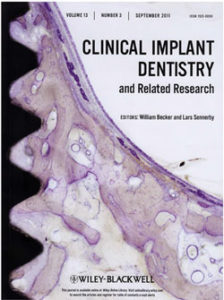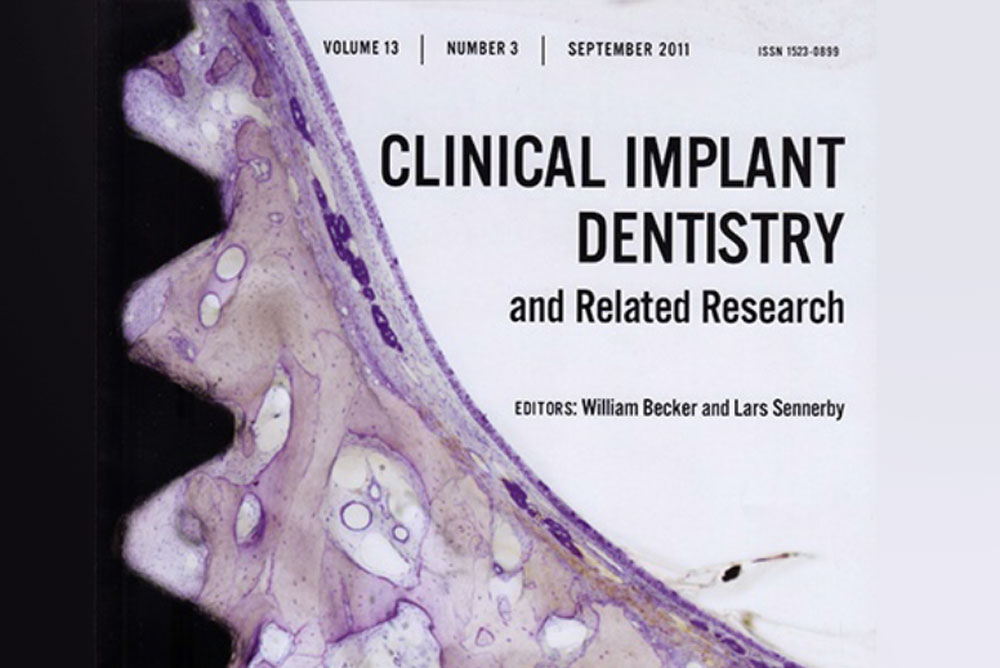 Alveolar ridge regeneration of damaged extraction sockets using deproteinized porcine versus bovine bone minerals: A randomized clinical trial .
Alveolar ridge regeneration of damaged extraction sockets using deproteinized porcine versus bovine bone minerals: A randomized clinical trial .
Clin Implant Dent RelatRes2018 Jul27. Epub2018 Jul27.
This study aimed to determine the dimensional alteration of alveolar ridge following bone grafting of damaged extraction sockets, and compare the outcomes of using deproteinized bovine (DBBM) versus porcine bone mineral (DPBM) in the damaged sockets…
Backgrounds : Clinical benefits in bone grafting of intact extraction socket have been widely known, but limited evidence is available for the procedure in damaged extraction sockets due to periodontaldisease.
Purpose : This study aimed to determine the dimensional alteration of alveolar ridge following bone grafting of damaged extraction sockets, and compare the outcomes of using deproteinized bovine (DBBM) versus porcine bone mineral (DPBM) in the damaged sockets.
Materials and Methods : One hundred patients (n = 50 for e achgroup) with periodontitis induced damaged extraction socket were included in this randomized, single-blind trial. After removal of tooth and granulation tissue, sites were grafted with either DBBM (DBBM group) or DPBM (DPBM group), and covered with collagen membrane. Linear/volumetric analyses of hard and soft-tissue dimensions were performed on reconstructed/superimposed computed tomography and scanned cast images, taken immediately and 4 months after surgery.
Results : The two groups showed comparable hard tissue augmentation with minimal reductions in the grafted volume, as well as in vertical (1.22 ± 2.16 and 1.45 ± 1.92 mm for DPBM and DBBM group, respectively) and horizontal (1.43 ± 3.40 and 1.83 ± 2.85 mm on the central section, respectively) dimensions at 4 months after surgery. However, several cases showed large variations in maintenance of the grafted volume. None of the measured parameters in hard and soft tissue dimensions differed significantly between DBBM and DPBM sites.
Conclusions :DBBM and DPBM can comparably augment damaged extraction sockets with minimal postoperative reduction of the grafted volume. However, the large variations in the results should be further evaluated for application in routine dental clinics.



 Italia
Italia

